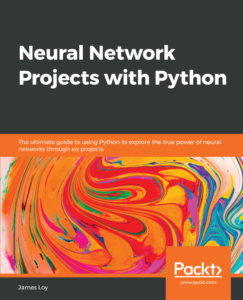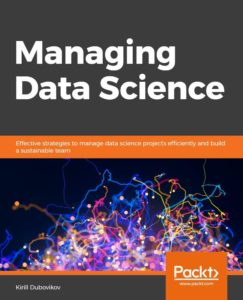It’s easy to fall into the trap of thinking about your next job, or even the job after that. It’s far more useful, however, to think more about the skills you want and need to learn now. This will focus your mind and ensure that you don’t waste time learning things that simply aren’t helpful.
It also means you can make use of the things you’re learning almost immediately. This will make you more productive and effective – and who knows, maybe it will make the pathway to your future that little bit clearer.
So, to help you focus, here are some of the things you should focus on learning as a data professional.
Reinforcement learning
Reinforcement learning is one of the most exciting and cutting-edge areas of machine learning. Although the area itself is relatively broad, the concept itself is fundamentally about getting systems to ‘learn’ through a process of reward.
Because reinforcement learning focuses on making the best possible decision at a given moment, it naturally finds many applications where decision making is important. This includes things like robotics, digital ad-bidding, configuring software systems, and even something as prosaic as traffic light control.
Of course, the list of potential applications for reinforcement learning could be endless. To a certain extent, the real challenge with it is finding new use cases that are relevant to you. But to do that, you need to learn and master it – so make 2020 the year you do just that.

Get to grips with reinforcement learning with Reinforcement Learning Algorithms with Python.
Learn neural networks
Neural networks are closely related to reinforcement learning – they’re essentially another element within machine learning. However, neural networks are even more closely aligned with what we think of as typical artificial intelligence. Indeed, even the name itself hints at the fact that these systems are supposed to in some way mimic the human brain.
Like reinforcement learning, there are a number of different applications for neural networks. These include image and language processing, as well as forecasting. The complexity of relationships that can be figured inside neural networks systems is useful for handling data with many different variables and intricacies that would otherwise be difficult to capture.
If you want to find out how artificial intelligence really works under the hood, make sure you learn neural networks in 2020.

Learn how to build real-world neural networks projects with Neural Network Projects with Python.
Meta-learning
Metalearning is another area of machine learning. It’s designed to help engineers and analysts to use the right machine learning algorithms for specific problems – it’s particularly important in automatic machine learning, where removing human agency from the analytical process can lead to the wrong systems being used on data.
Meta learning does this by being applied to metadata about machine learning projects. This metadata will include information about the data, such as algorithm features, performance measures, and patterns identified previously. Once meta learning algorithms have ‘learned’ from this data, they should, in theory, be well optimized to run on other sets of data.
It has been said that meta learning is important in the move towards generalized artificial intelligence, or AGI (intelligence that is more akin to human intelligence). This is because getting machines to learn about learning allow systems to move between different problems – something that is incredibly difficult with even the most sophisticated neural networks.
Whether it will actually get us any closer to AGI is certainly open to debate, but if you want to be a part of the cutting edge of AI development, getting stuck into meta learning is a good place to begin in 2020.
Find out how meta learning works in Hands-on Meta Learning with Python.
Learn a new programming language
Python is now the undisputed language of data. But that’s far from the end of the story – R still remains relevant in the field, and there are even reasons to use other languages for machine learning.
It might not be immediately obvious – especially if you’re content to use R or Python for analytics and algorithmic projects – but because machine learning is shifting into many different fields, from mobile development to cybersecurity, learning how other programming languages can be used to build machine learning algorithms could be incredibly valuable. From the perspective of your skill set, it gives you a level of flexibility that will not only help you to solve a wider range of problems, but also stand out from the crowd when it comes to the job market.
The most obvious non-obvious languages to learn for machine learning practitioners and other data professionals are Java and Julia. But even new and emerging languages are finding their way into machine learning – Go and Swift, for example, could be interesting routes to explore, particularly if you’re thinking about machine learning in production software and systems.
Find out how to use Go for machine learning with Go Machine Learning Projects.
Learn new frameworks
For data professionals there are probably few things more important than learning new frameworks. While it’s useful to become a polyglot, it’s nevertheless true that learning new frameworks and ecosystem tools are going to have a more immediate impact on your work.
PyTorch and TensorFlow should almost certainly be on your list for 2020. But we’ve mentioned them a lot recently, so it’s probably worth highlighting other frameworks worth your focus: Pandas, for data wrangling and manipulation, Apache Kafka, for stream-processing, scikit-learn for machine learning, and Matplotlib for data visualization.
The list could be much, much longer: however, the best way to approach learning a new framework is to start with your immediate problems. What’s causing issues? What would you like to be able to do but can’t? What would you like to be able to do faster?
Explore TensorFlow eBooks and videos on the Packt store.
Learn how to develop and communicate a strategy
It’s easy to just roll your eyes when someone talks about how important ‘soft skills’ are for data professionals. Except it’s true – being able to strategize, communicate, and influence, are what mark you out as a great data pro rather than a merely competent one.
The phrase ‘soft skills’ is often what puts people off – ironically, despite the name they’re often even more difficult to master than technical skill. This is because, of course, soft skills involve working with humans in all their complexity.
However, while learning these sorts of skills can be tough, it doesn’t mean it’s impossible. To a certain extent it largely just requires a level of self-awareness and reflexivity, as well as a sensitivity to wider business and organizational problems. A good way of doing this is to step back and think of how problems are defined, and how they relate to other parts of the business.

Find out how to deliver impactful data science projects with Managing Data Science.
If you can master these skills, you’ll undoubtedly be in a great place to push your career forward as the year continues.










![How to create sales analysis app in Qlik Sense using DAR method [Tutorial] Financial and Technical Data Analysis Graph Showing Search Findings](https://hub.packtpub.com/wp-content/uploads/2018/08/iStock-877278574-218x150.jpg)





